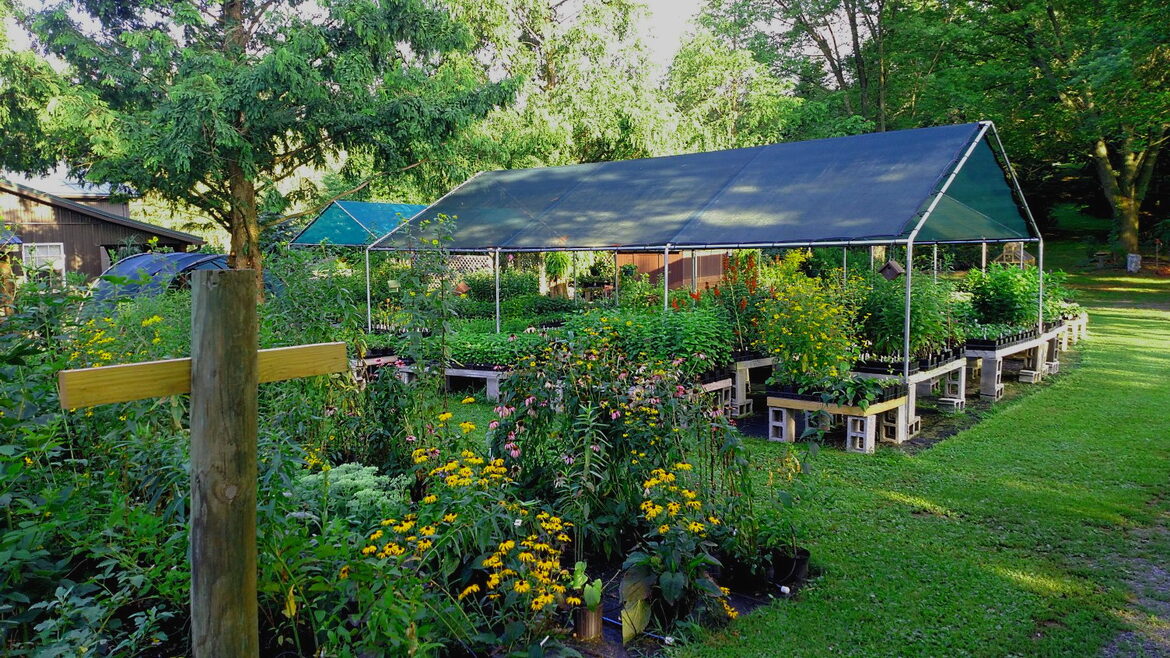Growing Tips and Suggestions
There are 3 categories of plants. Those who come from other places. Natives that have grown here for thousands of years. And natives that have been cultivated (changed) to be more appealing to people.
Straight native plant species are genetically adapted to our native bees, birds and butterflies. They both need each other to survive. Changed plants are just that. They are no longer appealing to the native wildlife. The leaves can no longer support their young. The nectars no longer have the nutrients they are seeking. The berries may not be tasty or exist at all. The branches may not support a nest. The more straight species of plants you grow, the more species of wildlife you will attract.
Native plants thrive in the wild where they are most suited to be. You should try to duplicate those conditions in your landscape for them to thrive.
Young plants have more stamina. As they age, proper growing conditions are paramount. Ex: A young Redbud tree seems to do well in full sun. But as they age, the top will slowly deteriorate. Redbuds natively grow at the edge of the woods spending only a few hours in full sun.
Sun requirements are based on the intense direct sun in July.
*Afternoon summer sun is accompanied with a breeze that turn the leaves. Many plants don't like their leaf bottoms receiving direct sun.
Most shade plants begin the season in the sun until the leaves come on the trees.
Part sun - half direct sun and half indirect sun.
Part shade - some direct sun; lots of indirect sun and some low light
Shade - the absence of direct sun; some indirect light; low light; speckled sun
*Very few plants will thrive in deep shade
*Many full sun plants thrive in the wild because they live close to other plants that keep their bottom out of direct sun or have the ability to shade themselves.
Plants need good air flow to prevent funguses.
Most plants will not live in water or very wet soil. Most plants that require damp soil don't want the base of the plant (ground level) to be in wet soil. They prefer to live above the water line and allow their roots to penetrate the wet soil. This way they have access to lots of water without living in it.
Hillside / any slope growing is the best. Water flows down hill across the roots without the plants laying in it. Top of the hill for the dryer plants. Bottom of hill for wetter plants.
Use mulch to keep roots damp. Most mulch has an acidic ph. It will aid the growth of native plants. Pine mulch is very acidic (and compatible with most native plants) which will keep most weeds from growing.
Dig holes for plants half again the size of the pot. Mix old potting soil or humus material with your soil to keep it light. Then the new hair like roots can easily penetrate to establish water sources for the plant.
Do this if you want to keep your plants consistently damp long term or grow plants that must be kept damp in an area that stays dryer:
- After you have finished planting the plant and before you add mulch, cover the surface around the plant to include the whole root area with thick layers of newspaper or cardboard. Then spread your mulch over top. Then water the area. The newspaper or cardboard will stay wet for a long time. Worms will eat the newspaper or cardboard and turn it into worm casings which is the finest soil you can have. The ink is made of soy.
-This is a 'win win' for you and your plants. You can recycle all your newspaper and cardboard into your landscape and your plants will thrive. It will also keep the weeds from coming up. You will need to repeat this process every year and a half.
*Note - The worms in my area prefer the editorial section down as the bottom layer. You will just have to experiment with the worms in your neighborhood.
